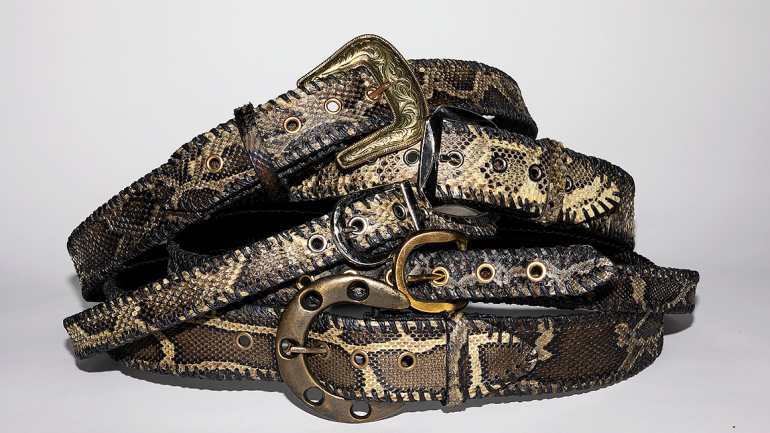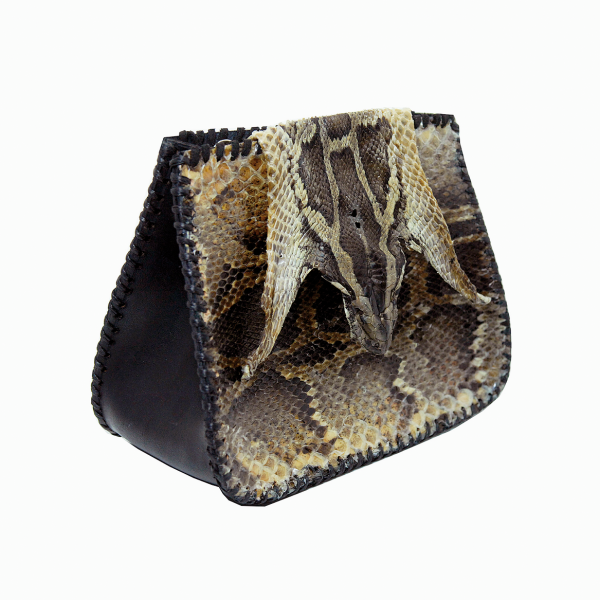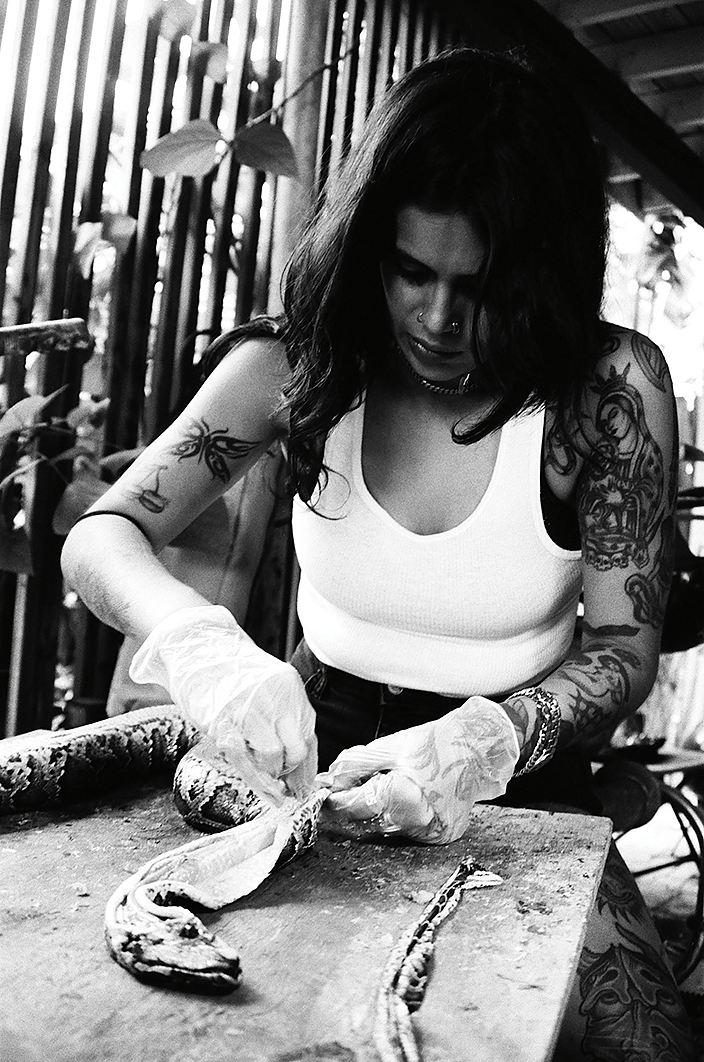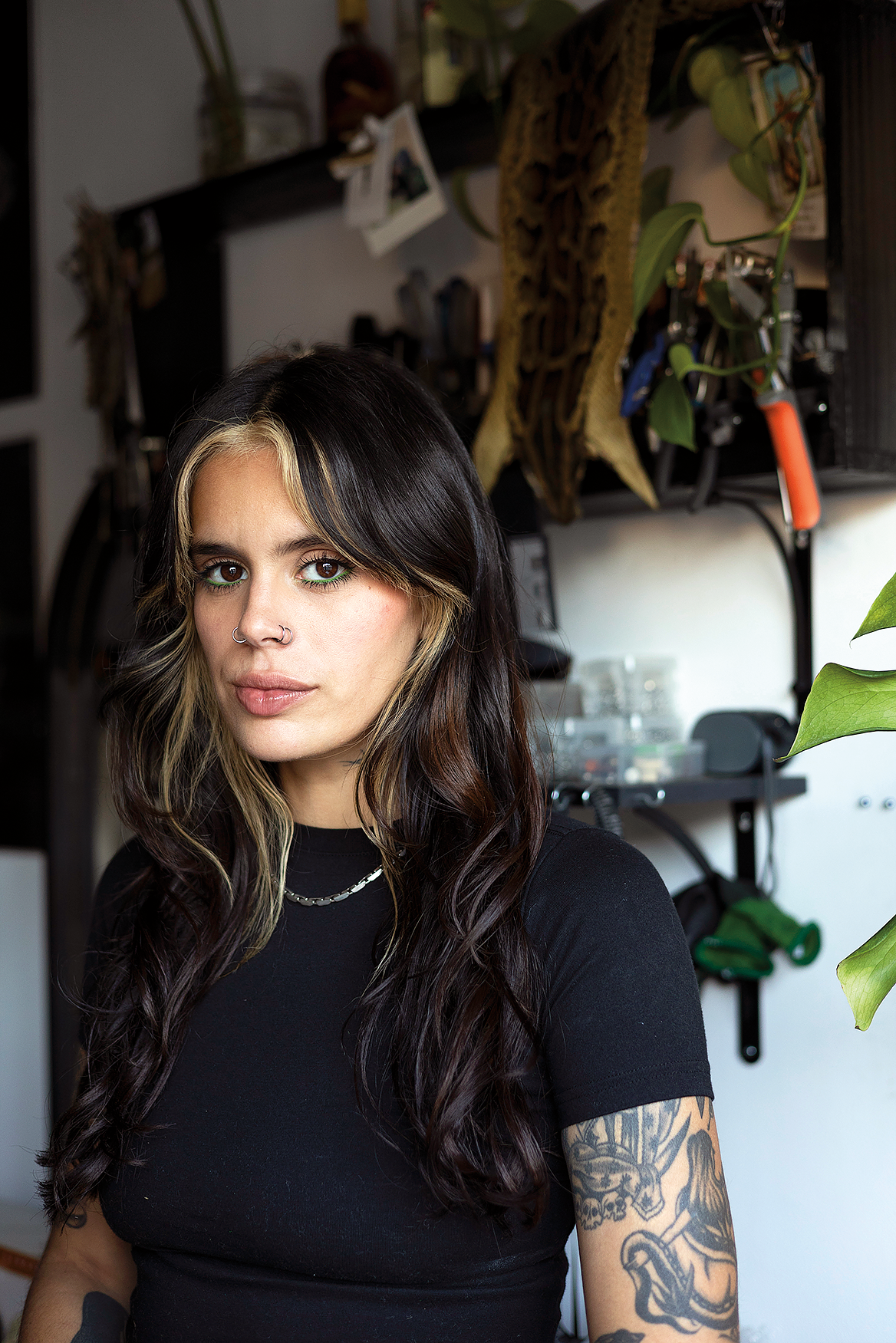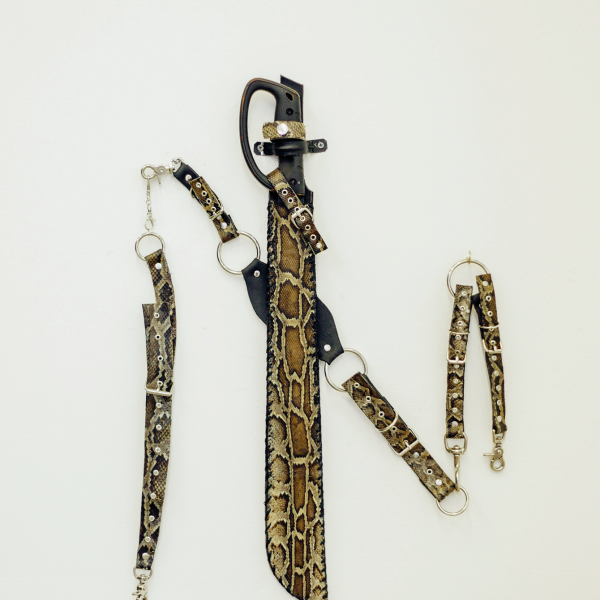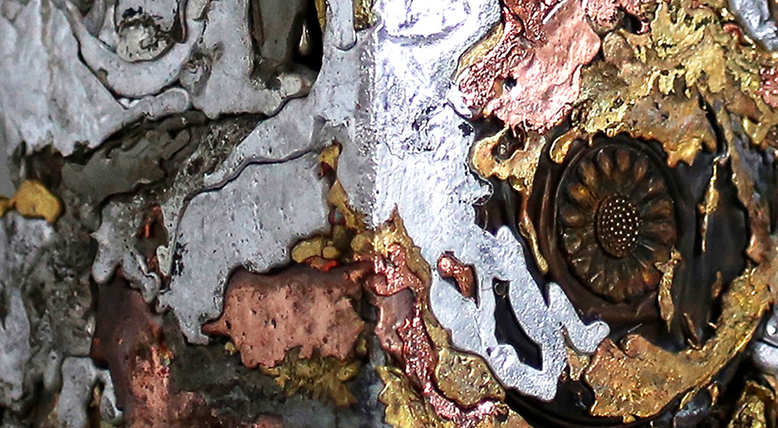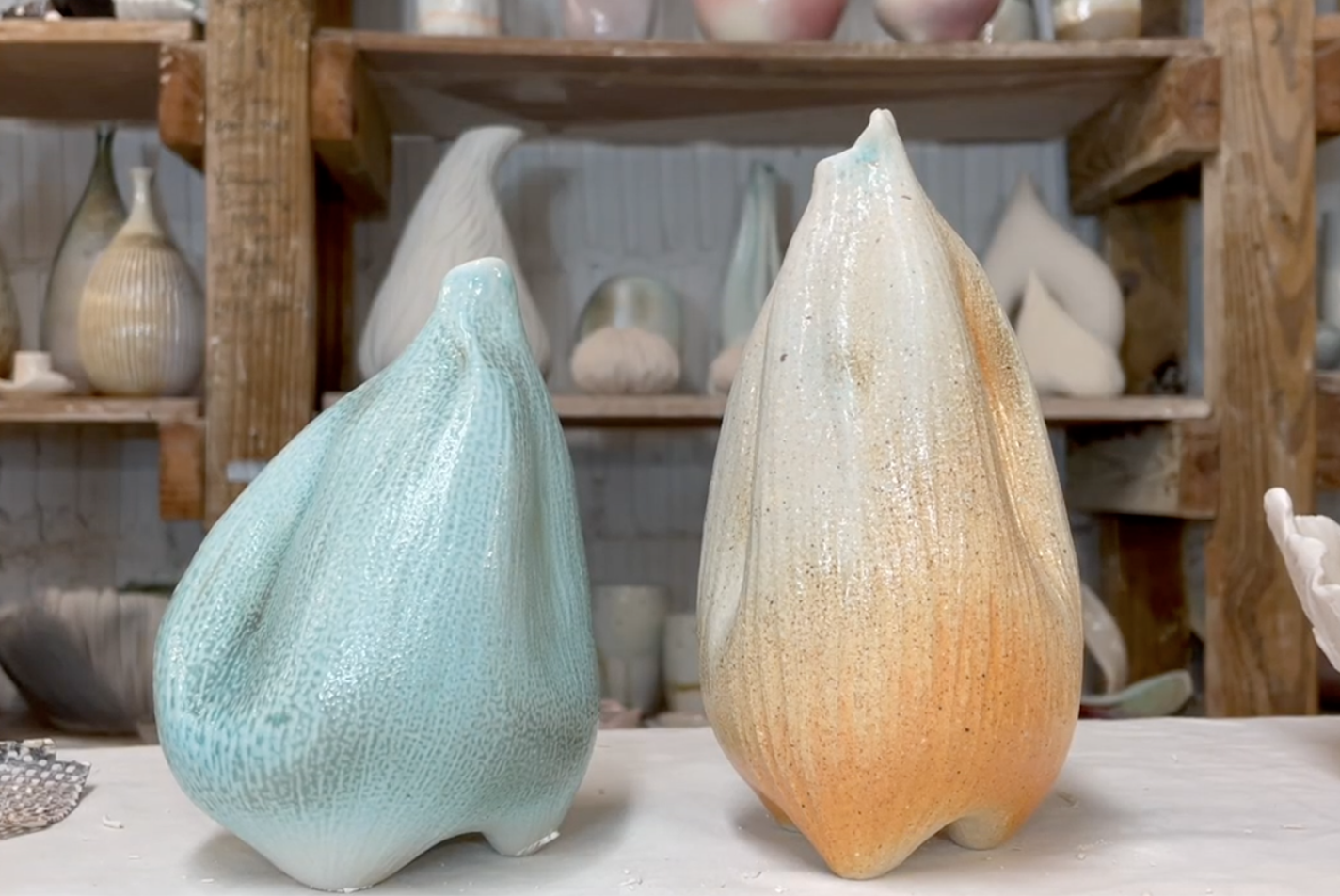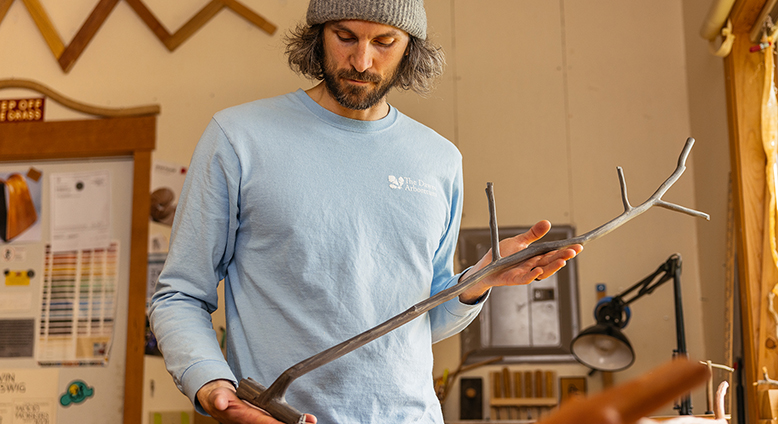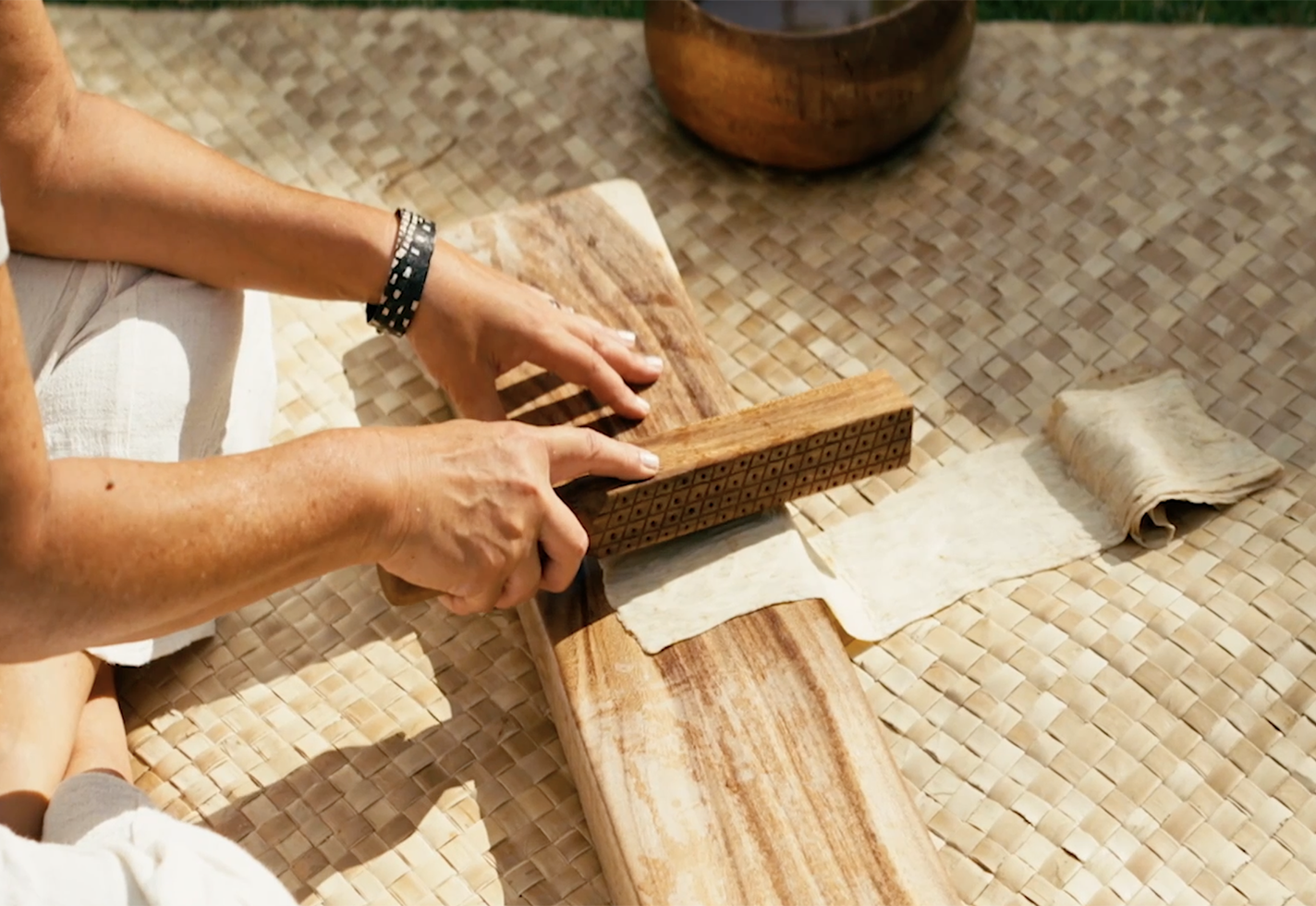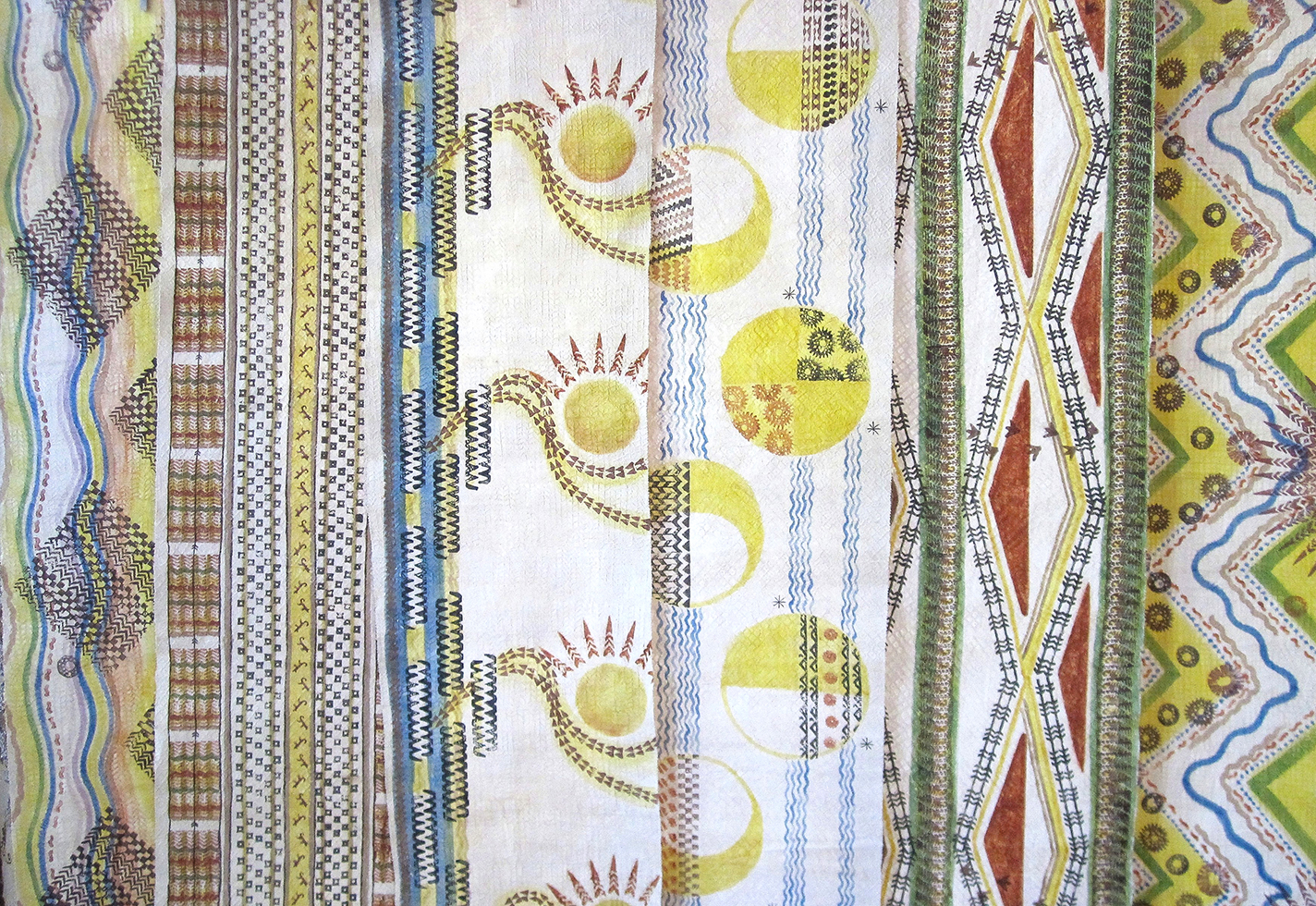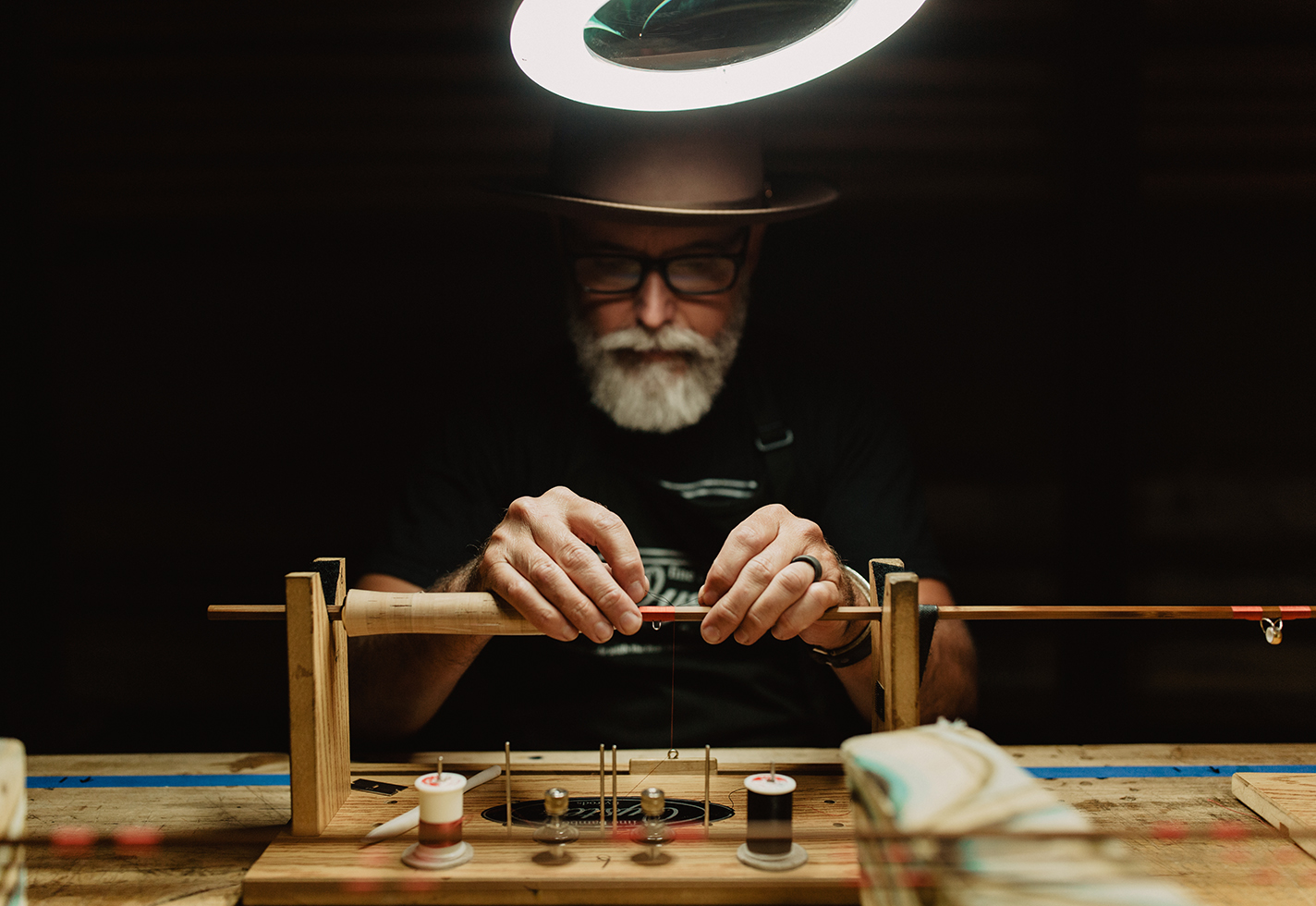The first time Elle Barbeito skinned a Burmese python, she made each move carefully. “Layer by layer, I could see all the connections within it. It was fascinating, and a little gross, but also really beautiful at the same time.”
Today, Barbeito gives these skins a second life through fashion and functional art. The Miami-based designer creates edgy collections of clothes, bags, sheaths, and even furniture from the preserved skins of pythons. The work was sparked because of two significant environmental issues: the proliferation of this invasive species in Florida and excess textiles.
After pursuing a degree in fashion design at the Pratt Institute in New York City, Barbeito felt disillusioned by the waste the industry generates. According to the UN Environment Programme, the equivalent of a garbage truckload of textiles is buried in a landfill or burned every second. “It was getting really exhausting to see how much waste was being produced, to be part of an industry that causes so much damage,” she says.
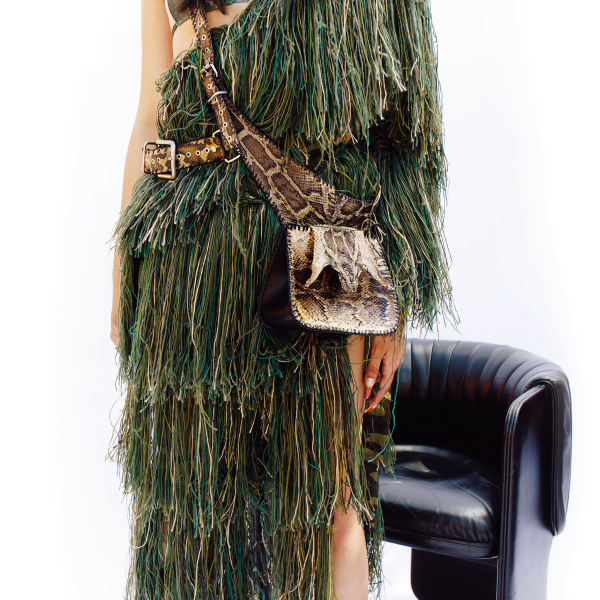
Model wears a deconstructed Ghillie suit and python cross-body skeleton vest with detachable ammo pouch and snake head detail.
